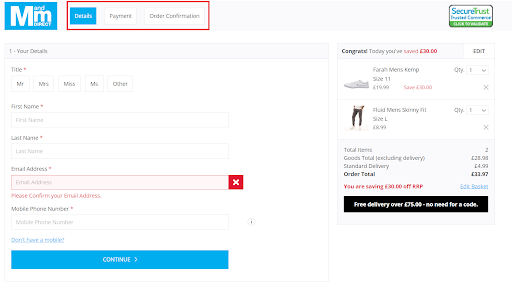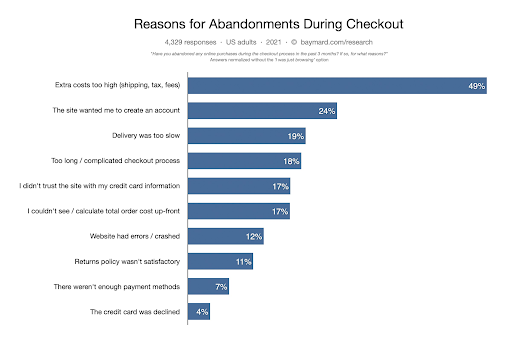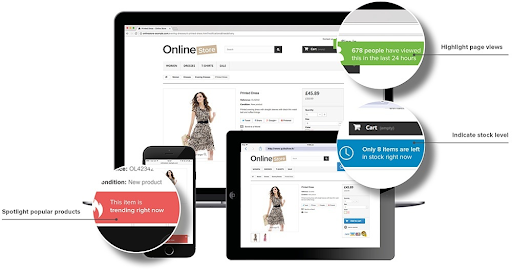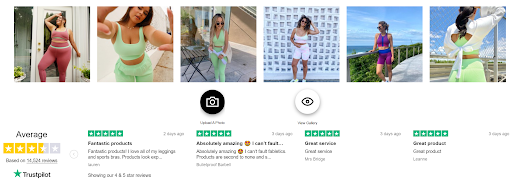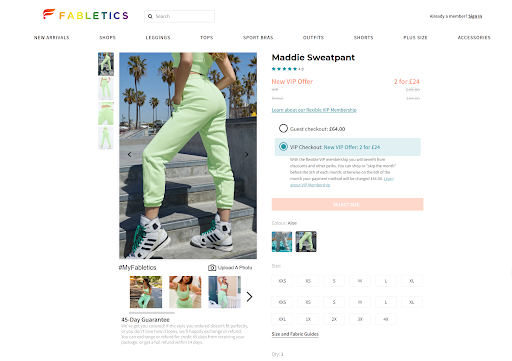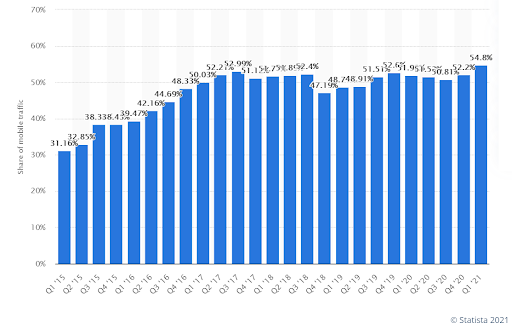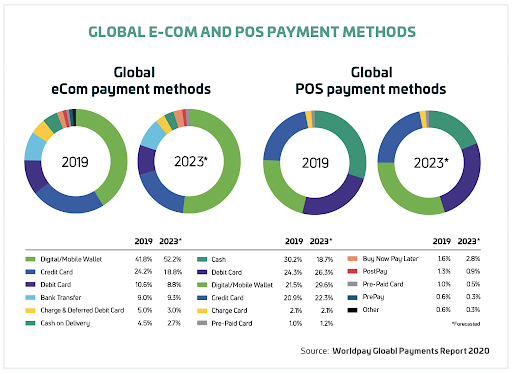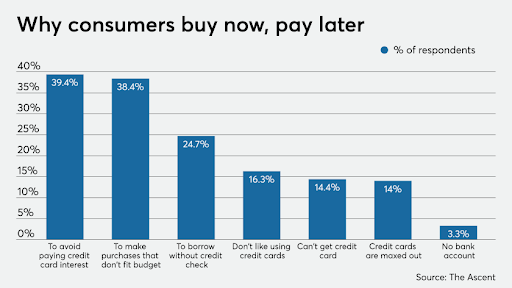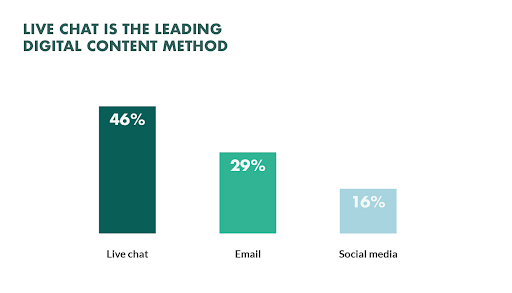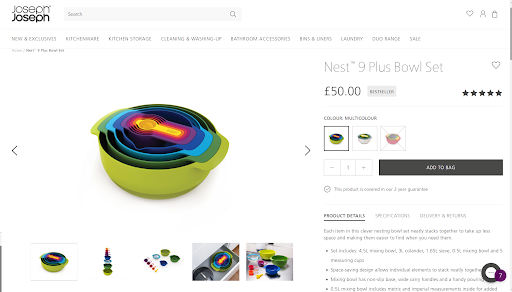This guest post is written by Yieldify‘s Content Marketing Manager, James Garnier.
Yieldify
provides website personalization and CRO solutions to improve e-commerce customer journeys.
Running a successful ecommerce store takes a lot. It’s an ever-changing environment with more competitors launching websites every day. Combined with an ever-demanding consumer, you need to ensure your ecommerce store is doing all it can to provide the best possible customer experience.
We’ve looked at some of the most successful websites and interesting data to outline the top nine traits that successful ecommerce stores have in common.
These traits can act as a checklist and guide for those wishing to improve or benchmark their ecommerce website.
So let’s dive straight in.
Trait 1: They provide personalized experiences
Ecommerce personalization is the process of delivering relevant content, product recommendations and specific offers based on previous actions. This allows ecommerce sites to create a
personalized experience across different touchpoints
for each customer. This not only engages shoppers, but increases conversion rates and repeat purchases.
In July 2020,
Yieldify surveyed 400 ecommerce leaders
across the UK and US regarding the challenges of website personalization and its evolving future.
In the survey, 76% of respondents said that real-time behavioral data was their favorite way to personalize websites. This type of information is collected through in-session behaviors – sessions refer to a group or user-specific actions performed within a page on a website during a time, such as button clicks and site loads.
There are some very simple and effective ways ecommerce stores can implement personalization. Below are two that always work well.
Show previously viewed or “customers also liked” product recommendations
Pure Vida created two product recommendations to sit on their product detail pages. They didn’t attempt anything overly fancy with the design and instead went with simple, data-backed recommendations, as seen below.
Within the first year, this combination is
reported to have generated
:
-
24 million recommendations and an additional 1.6 million clicks
-
7.9% average recommendation conversion rate
This shows just how powerful a simple personalization tactic can be. And as personalized ecommerce experiences continue to improve and rise in prominence, users’ expectations are bound to increase.
Use behavioural data to show real-time offers
Using behavioural data and personalization ecommerce websites can tailor offers to website visitors. For example, if you can see that a new user is highly engaged and has added a product to their
shopping cart
before fully committing to the purchase, you can hit them with a targeted offer – just like FAB do in the below example targeting new customers.
Trait 2: Delivery & returns are as smooth as possible
Delivery and returns will always be a huge part of running an ecommerce business. Here are two quick stats to emphasize this:
-
60%
of consumers will abandon their carts if the price of shipping is too high
-
39% will abandon their carts if free shipping isn’t offered
The very nature of shopping online is risky for a consumer. There is always a chance that a customer will not like the product in person and, for fashion purchases, it’s difficult to know if an item will fit well. Meanwhile, some customers opt to purchase multiple items in different sizes with the intention of sending the majority of the order back.
This isn’t necessarily a make-or-break trait for ecommerce stores, but it can have a huge effect on conversion rates and propel your revenue to new heights.
Personalized experiences aren’t just limited to websites, they should be across every channel. Where better to double down on personalization than within a loyalty program? Providing personalized product or service recommendations, or even early access to a new product that your data tells you a loyalty member would like is a great way to provide you customers with VIP treatment.
Can you offer free shipping?
Free shipping is a huge advantage in increasing sales, even though many ecommerce stores fail to provide the service.
To negate cart abandonment and to increase conversions, offer free or reduced shipping costs where possible. If it’s not possible to offer this for the entire store, deploy it on certain items or implement it as part of a bundle.
Other alternatives include offering free shipping once a consumer spends a certain amount, or offering free shipping coupon codes as part of a discount or promotion. Just remember to ensure the store can balance the bottom line.
Free shipping can also be used as a loyalty mechanism, a great example of this is ASOS. They offer free next day delivery for a year for £9.95 and even break down how much this could save customers.
Once customers know they have free delivery for a year you immediately get rid of one barrier to purchase. Now in the back of their minds they know they have free next day delivery with you so can get products quickly if they need them.
A clear and reasonable returns policy
Research from Barclaycard
shows that free returns have become the ‘new normal’. They found a fifth of consumers will only shop at retailers that offer free returns.
So, make sure
your return policy
doesn’t deter potential buyers from submitting an order and offer free returns where possible. Again, this can be applied to certain time periods or products.
Make sure shoppers know what they’re allowed to return, the relevant timeframes and how much it’s going to cost to send items back.
In the below example, you can see that Freemans are fully committed to free delivery and returns and make a strong effort to highlight this.
Trait 3: The checkout process is quick and easy
Research from Baymard shows that
18%
of online shoppers in the US have abandoned a purchase due to the checkout process being too long or complicated.
Your checkout process needs to be as seamless as possible. If your product page (more on that later) has convinced a customer to add to basket, you need to guide them effortlessly throughout the checkout steps to conversion.
Make sure you display progress bars and keep the number of steps required to a minimum. Small yet significant tools like address lookup can really speed up the checkout process.
In the example below from MandM Direct, we can see the progress steps highlighted. The retailer also includes social proof, free delivery information and highlight total savings to keep the user engaged and reassure them of their purchase decision.
Offer a guest checkout
The
Baymard Institute found that 24%
of users will abandon checkout if account creation is required. Providing a guest checkout option is a simple way to reduce barriers to purchase on your ecommerce website.
A smooth checkout process will keep customers coming back, especially those who are purchasing from you for the first time. Once you have provided a good experience you can focus on retention and building loyalty.
Trait 4: They have a tonne of social proof
Social proof can take many forms on a website but for ecommerce stores, it’s normally in the form of product reviews. Exceptional
ecommerce stores use social proof
in multiple ways throughout their website.
From homepages to product pages and even during the checkout process, social proof needs to be strategically used to help drive revenue. From reviews to scarcity tactics, there are plenty of options that can be implemented.
A great example of using social proof comes from Fabletics. On the homepage, they display
user-generated content (UGC)
to show their clothing on real customers, while a recognisable TrustPilot logo with the latest 5-star reviews is also included to build customer confidence.
But they don’t stop there. Let’s take a quick look at their product page below.
You can see reviews and star ratings are present, but they also present UGC content below the main images and clearly outline their 45-day guarantee. This is done on
each SKU
(Stock Keeping Units) they have so it’s very effective.
Make sure you use social proof in places where the user may be hesitant to continue. For example, displaying secure checkout badges and other guarantees at the checkout stage should help to increase conversion rates.
For customers to feel comfortable submitting UGC there really has to be a sense of community and to feel part of the brand. Whilst a great product is key, other factors such as social media engagement, email marketing, and loyalty programs can all play a key role in building brand loyalty and advocacy.
Trait 5: They provide a great mobile user experience
Mobile traffic has been steadily increasing in recent years and that trend is likely to continue. Leading ecommerce stores will need to take a mobile-first approach when it comes to website design and optimization. It’s also important to note that Google is adopting a
mobile-first approach with indexing
, which highlights the increasing importance of mobile.
If you don’t have a great mobile experience you will likely be missing out on new customers. Similar to the checkout experience, this could potentially turn away new customers from purchasing which reduces the growth of your customer base and those you can build lifetime value with.
Trait 6: The website loads quickly
This is a big one. Everyone – from online shoppers to Google – wants your website to load as quickly as possible. Naturally, there are stats to explain why your website needs to be quick.
With that said, here are two of the most hard-hitting ones we found.
So, page speed can affect your website twofold. One from a user perspective, and the other from Google’s perspective. A slow website will cause visitors to get frustrated, which could ultimately force them to exit the site completely.
Page speed is a
confirmed
ranking factor on Google, so the websites with the quickest loading speeds will ultimately be rewarded on search. Now, we’re not suggesting that you have to score 100/100 on every aspect of page speed, but it’s important to
focus on benchmarking
and outperforming your competitors.
Depending on
which ecommerce platform your website is built on
, or what template you’re using, you may need to plan in some development costs to improve website speed. If you’re just starting out in the world of ecommerce, make sure you do your due diligence when selecting a platform or website design.
Trait 7: They offer multiple payment options
The Global Payments Report 2020 found that digital and mobile wallets already lead ecommerce payment preferences with 42% of spending in 2019 — up from 36% in 2018.
Providing choice on payments is about appealing to the broadest range of customer preferences, and trying to ensure that people don’t abandon carts because they can’t pay with their preferred method. With credit and debit card payment methods predicted to decline, successful ecommerce stores will need to keep up to date with new payment methods.
This includes alternative payment methods like Buy Now Pay Later solutions. These solutions are making high-end purchases more affordable, which in turn boosts the size of the audience an ecommerce store can sell to.
Options like Klarna are proving very popular with online shoppers. The benefit for store owners is that this opens the door to higher-value purchases. Other payment methods such as Apple Pay, Amazon Pay, and Google Pay should also be considered. With three of the biggest tech giants around offering their own payment solutions, it’s clear that customers are willing to try other methods.
Trait 8: They provide great customer service
Whilst delivery and returns are a big part of customer service, there’s also another aspect that you need to get right: Contact methods.
Research has shown that
79% of consumers
prefer live chat because of its convenience. Users can get answers fast while simultaneously browsing products.
Live chat can help build trust and foster relationships with shoppers as it allows you to respond to questions quickly, shows you’re accessible, and goes some way to replicating the in-store experience where members of staff would be on hand to speak with customers.
This may only be one aspect of customer service, but it’s an important one for ecommerce businesses. Of course, you’ll need a dedicated and trained team with the right software to carry out an effective live chat service.
Customer service will play a vital role in customer loyalty, especially when things go wrong, which unfortunately sometimes they do. The important part here is how your business deals with it, if the customer comes out feeling satisfied with the response they may well give you another chance. However, if they don’t it’s very hard to get that customer back again.
Trait 9: Product pages are on point
For an ecommerce website to stand any chance of success, they need to ensure that their product pages are on point. Product pages are one of the most important parts of an online store because of their influence on customers. A well constructed product page could convince a customer to complete a purchase but, on the flip side, a bad one is likely to drive them away.
A prime example of a good product page comes from Joseph Joseph.
This page has it all – doing everything to describe and demonstrate the product, its features and uses. The page includes excellent images of the product in action and clearly displays what is included in the purchase with a quick glance.
Customers have peace of mind knowing that returns and deliveries are straightforward and will be assisted by an extensive 2-year guarantee, so they can shop confidently when browsing through their options.
A very nice feature of this product page is the UGC content used as social proof. As we mentioned in trait four, that is a huge plus!
Having a strong product page template that can be used amongst multiple product Stock Keeping Units (SKU) is a must for 2021. However, those leading the way will create specific product pages where required, tailored specifically to each SKU.
Conclusion
Hopefully, these nine traits have provided you with some inspiration for your own ecommerce website. If you can incorporate, or even master, the aspects we have detailed above, your ecommerce website stands to benefit hugely.












